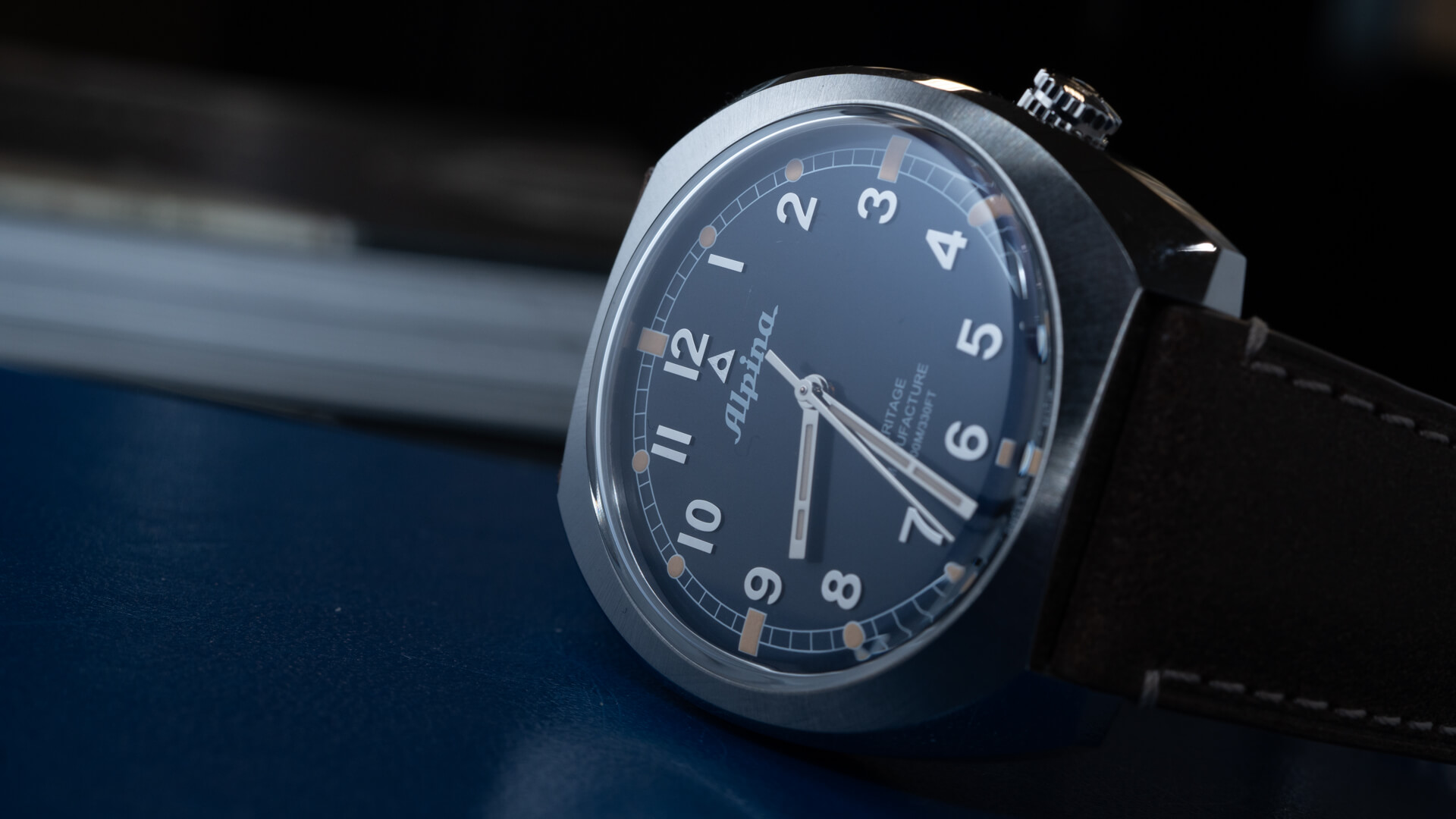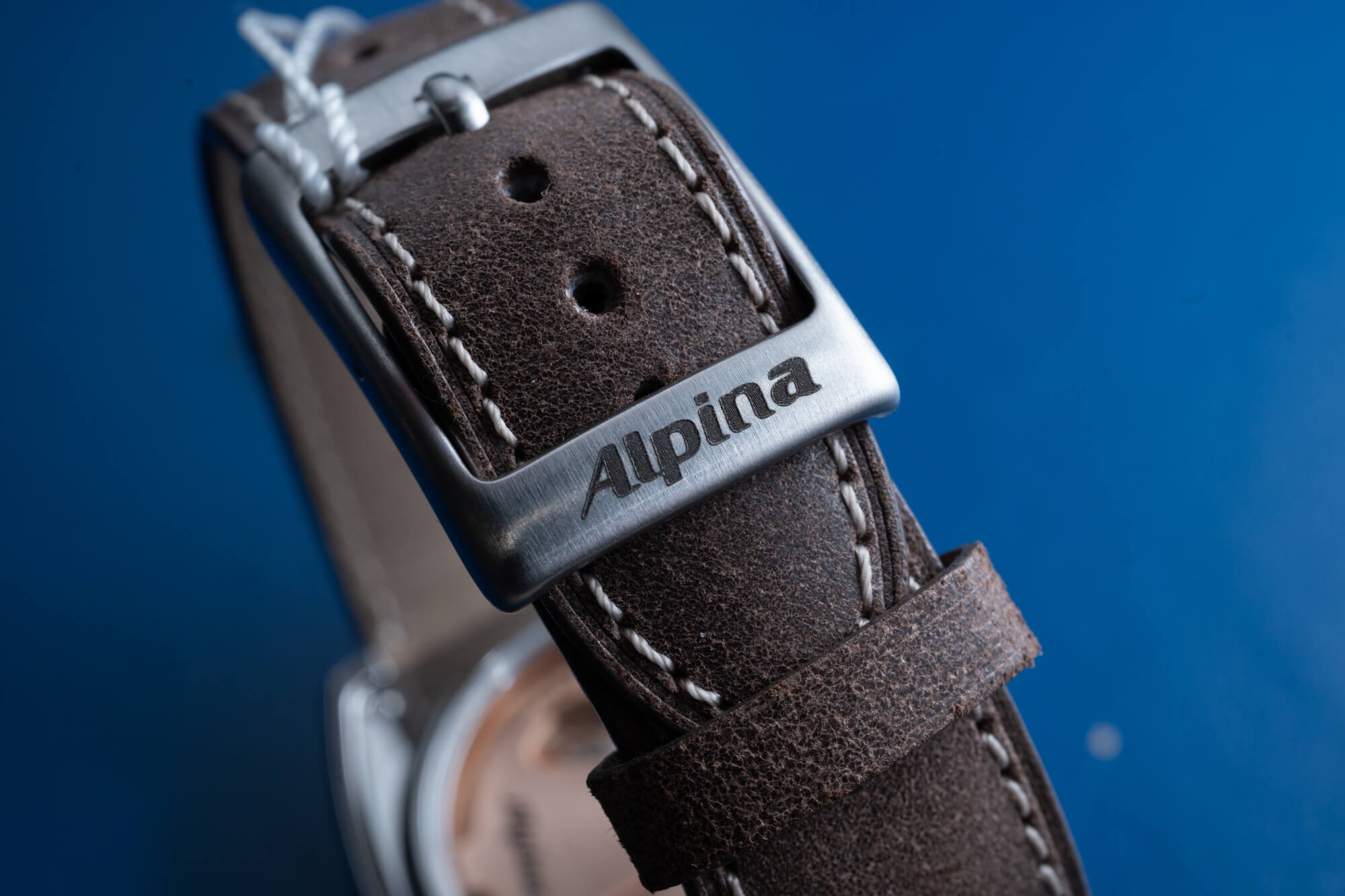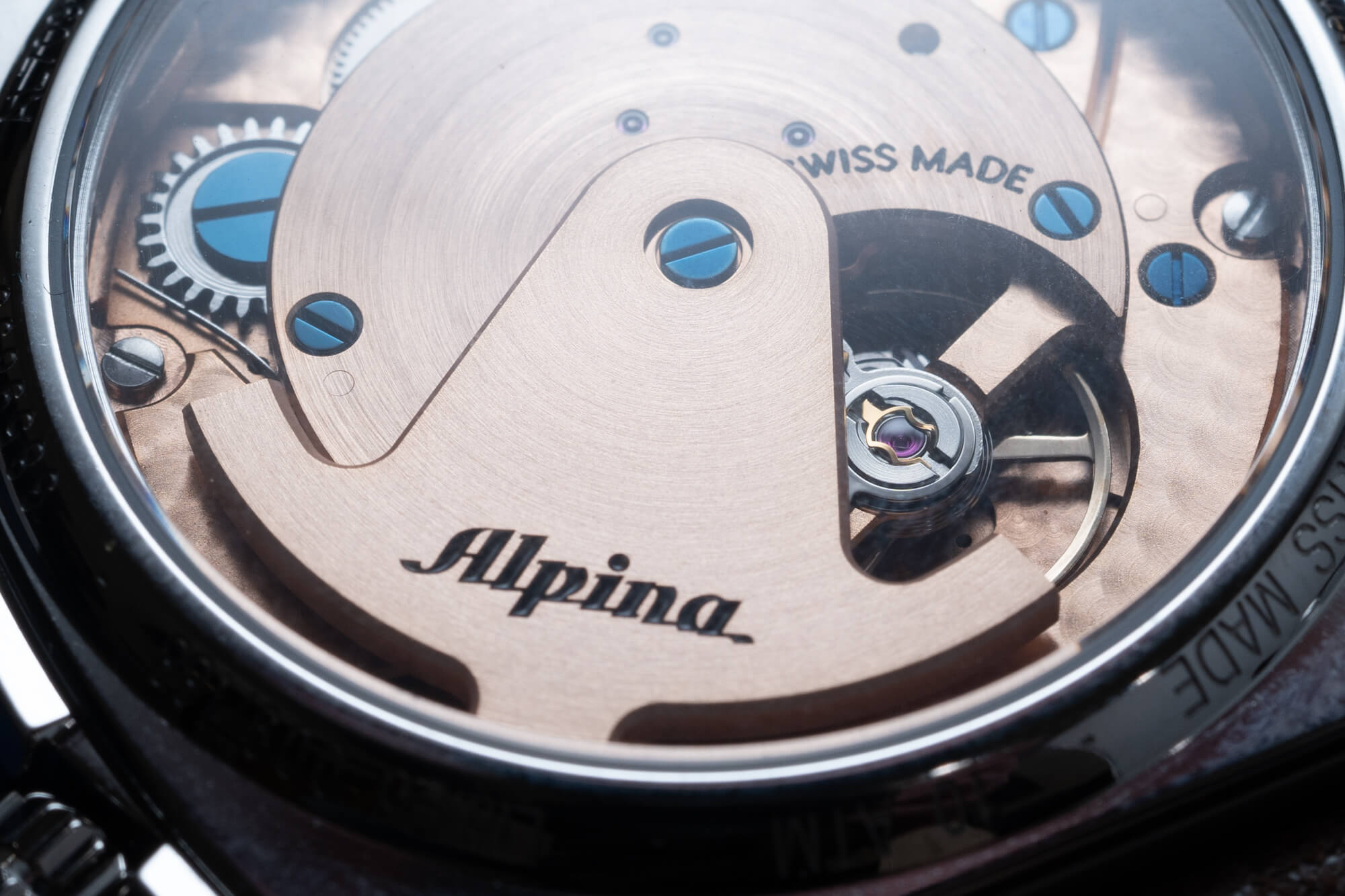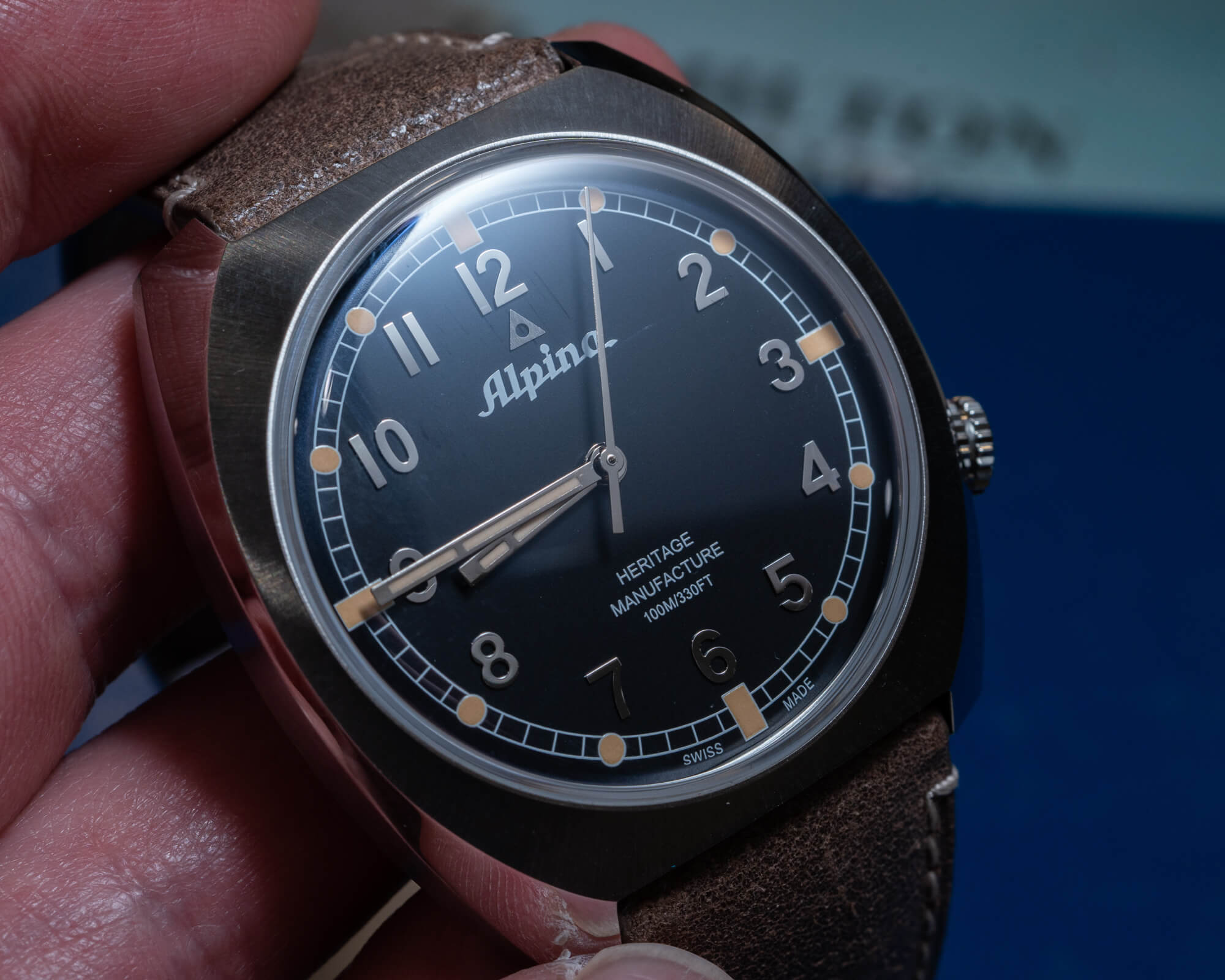
Well, here’s another version of a watch nobody asked for but is still plenty cool. That’s to say, I’m not sure how many people were pining for a watch with a bumper movement who hadn’t already gone and bought an old one. But Alpina has just released its third and fourth versions of the Startimer Pilot Heritage with a modernized bumper movement. The brand revealed the first versions in late 2021, fittingly, a month before Christmas, as one of them had a probably unintentional, red-and-white candy cane colorway. No longer dizzied by the holiday spirit, the brand has released a blue dial in a stainless-steel case and a gold-plated model with a gray champagne dial. I got to go hands-on with the former at a recent brand event outside of Washington, D.C. at authorized dealer Murad & Co.
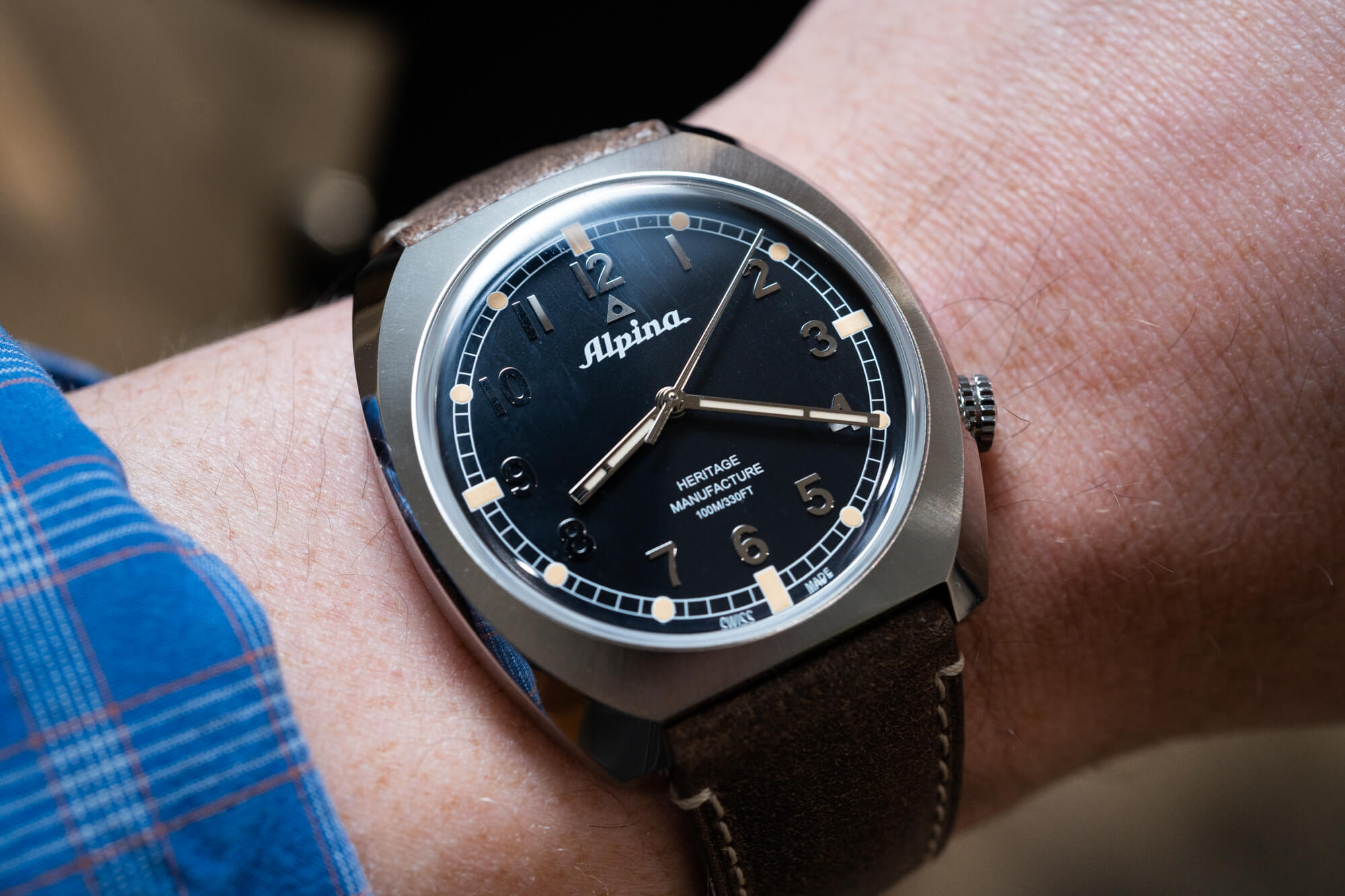
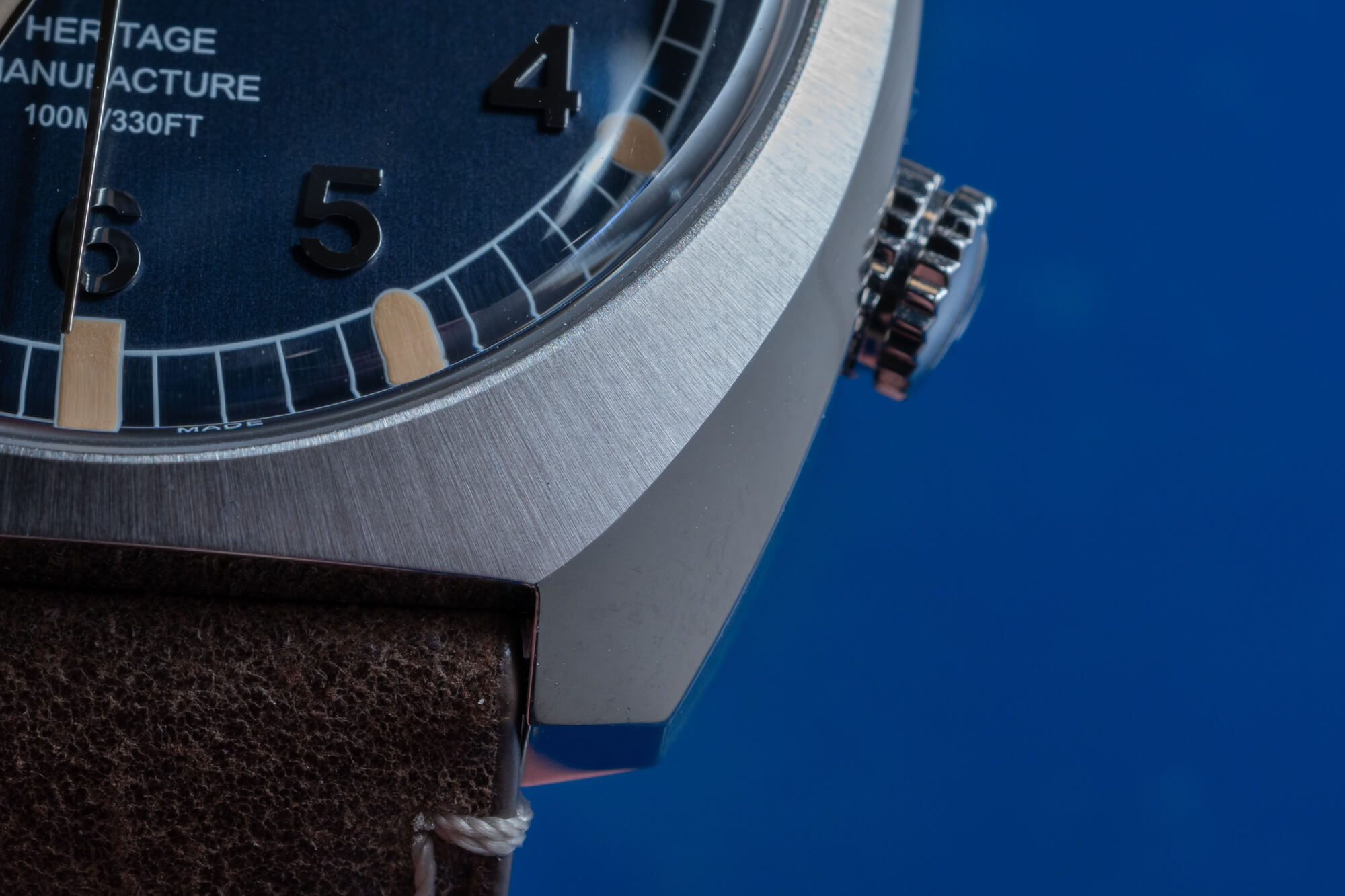 On the wrist, the Alpina Startime Pilot Heritage is rather friendly, not a surprise given its 40.75mm width and 42mm lug-to-lug. The 13.5mm thickness is mitigated by the form of the case. Not only does it feature an overall curve from lug to lug, but the wide surface around the crystal features brushing that bursts out from the domed sapphire crystal as it slopes down, and then the polished sides of the case continue to slope toward the wrist. The stark difference in finishing between the two wide facets makes for a beautiful tonneau case with contrasting plays of light. The pull-out crown at 4 o’clock has a great grip and was easy to operate, and its location reduces the risk of crown dig. The watch is paired with a brown distressed leather strap that was comfortable and not too stiff, with a branded pin-buckle closure. While I like this strap pairing well enough, it’s a little disappointing that there’s no quick-release, and you should know that the short lugs and resulting shallow lug box mean that thicker and/or single-pass straps may be challenging to attach.
On the wrist, the Alpina Startime Pilot Heritage is rather friendly, not a surprise given its 40.75mm width and 42mm lug-to-lug. The 13.5mm thickness is mitigated by the form of the case. Not only does it feature an overall curve from lug to lug, but the wide surface around the crystal features brushing that bursts out from the domed sapphire crystal as it slopes down, and then the polished sides of the case continue to slope toward the wrist. The stark difference in finishing between the two wide facets makes for a beautiful tonneau case with contrasting plays of light. The pull-out crown at 4 o’clock has a great grip and was easy to operate, and its location reduces the risk of crown dig. The watch is paired with a brown distressed leather strap that was comfortable and not too stiff, with a branded pin-buckle closure. While I like this strap pairing well enough, it’s a little disappointing that there’s no quick-release, and you should know that the short lugs and resulting shallow lug box mean that thicker and/or single-pass straps may be challenging to attach.
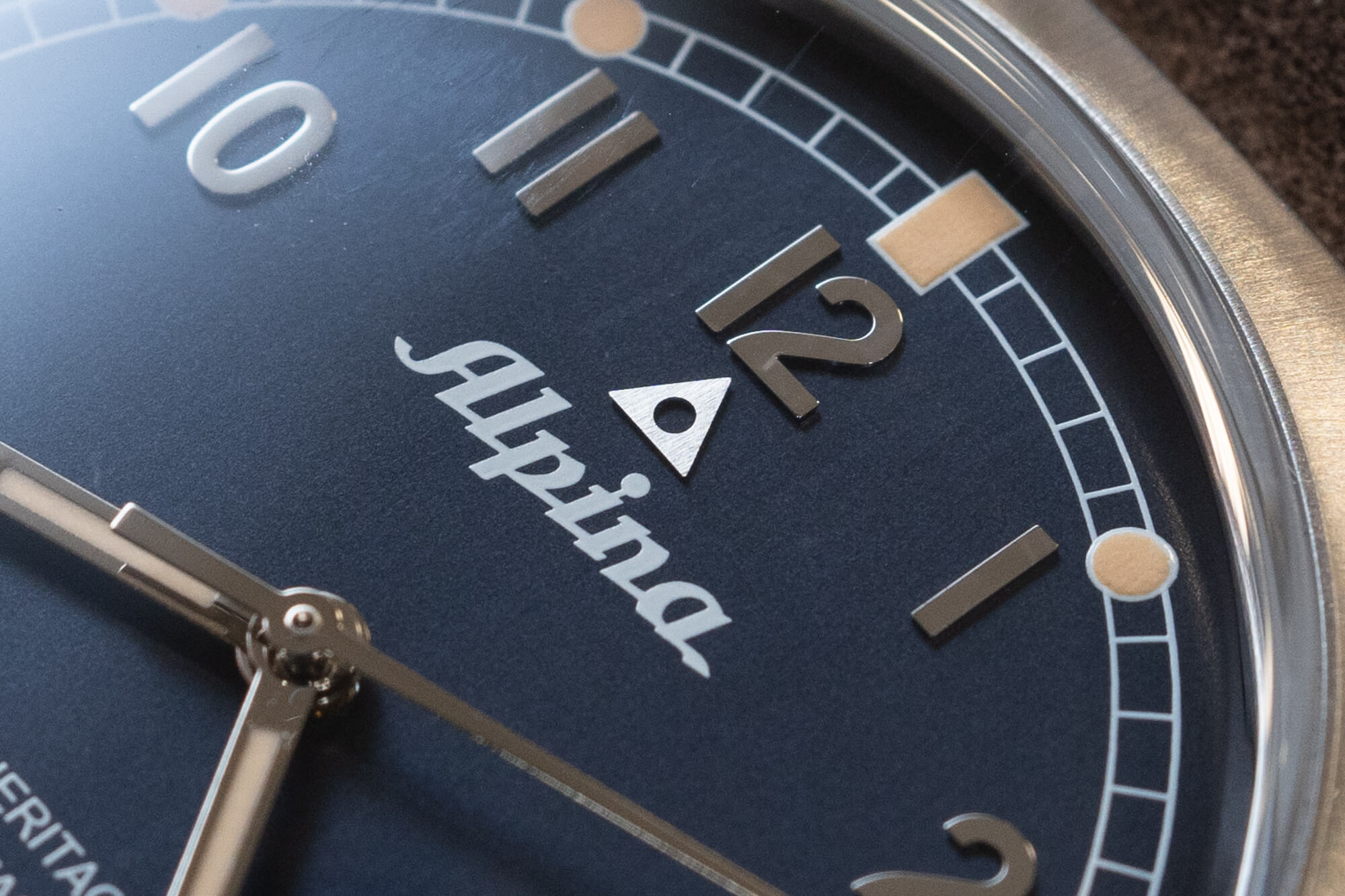
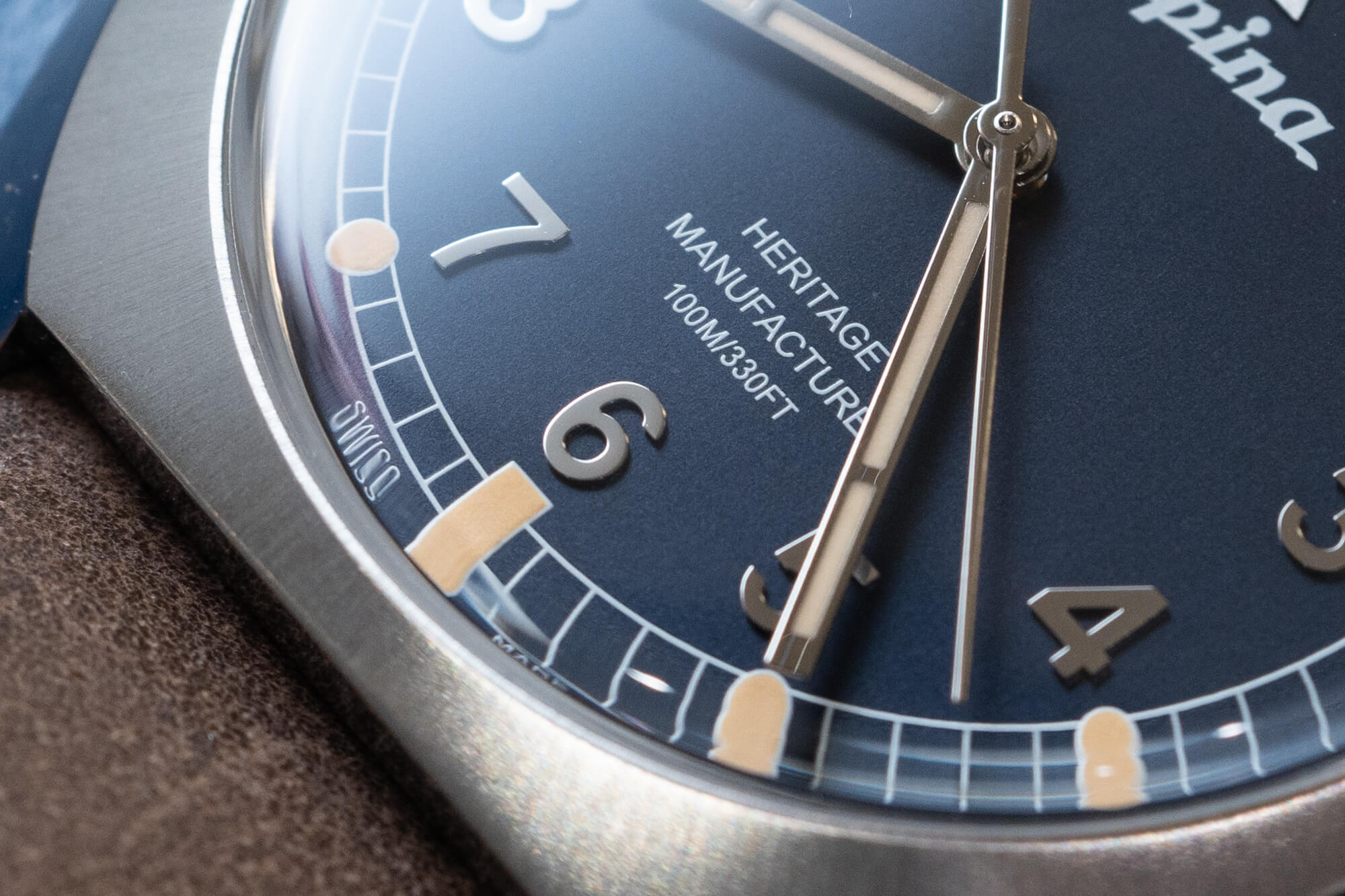 The watch is marketed as having a brushed blue dial, though it appears black in most lighting, and the brushing is extremely subtle to the point that you won’t see it except in the most ideal conditions. Some people like color and finishing to be overt, and while I’d like to see the blue stand out a bit more, I like how the brushing is coy, sometimes there, sometimes not; because you don’t get to see it every time, it’s a bit more special. Like when your dad randomly says, “I love you,” except without the crying afterward. The legibility is excellent, and I quite like how the Old Radium lume plots extend just a bit past the chapter ring. My favorite element, though, is the choice of applied, polished Arabic numerals, which complement the case’s finishing and lend a very clean look to the watch. These numerals (and the lume plots) replace the applied baton markers from previous releases. The handset has a segmented baton style and is well-proportioned in the context of the rest of the dial. So that you have all the information, the gray champagne dial features similar brushing with black applied numerals and hands that facilitate legibility (putting the same polished indices and hands on would have them lost against the dial).
The watch is marketed as having a brushed blue dial, though it appears black in most lighting, and the brushing is extremely subtle to the point that you won’t see it except in the most ideal conditions. Some people like color and finishing to be overt, and while I’d like to see the blue stand out a bit more, I like how the brushing is coy, sometimes there, sometimes not; because you don’t get to see it every time, it’s a bit more special. Like when your dad randomly says, “I love you,” except without the crying afterward. The legibility is excellent, and I quite like how the Old Radium lume plots extend just a bit past the chapter ring. My favorite element, though, is the choice of applied, polished Arabic numerals, which complement the case’s finishing and lend a very clean look to the watch. These numerals (and the lume plots) replace the applied baton markers from previous releases. The handset has a segmented baton style and is well-proportioned in the context of the rest of the dial. So that you have all the information, the gray champagne dial features similar brushing with black applied numerals and hands that facilitate legibility (putting the same polished indices and hands on would have them lost against the dial).
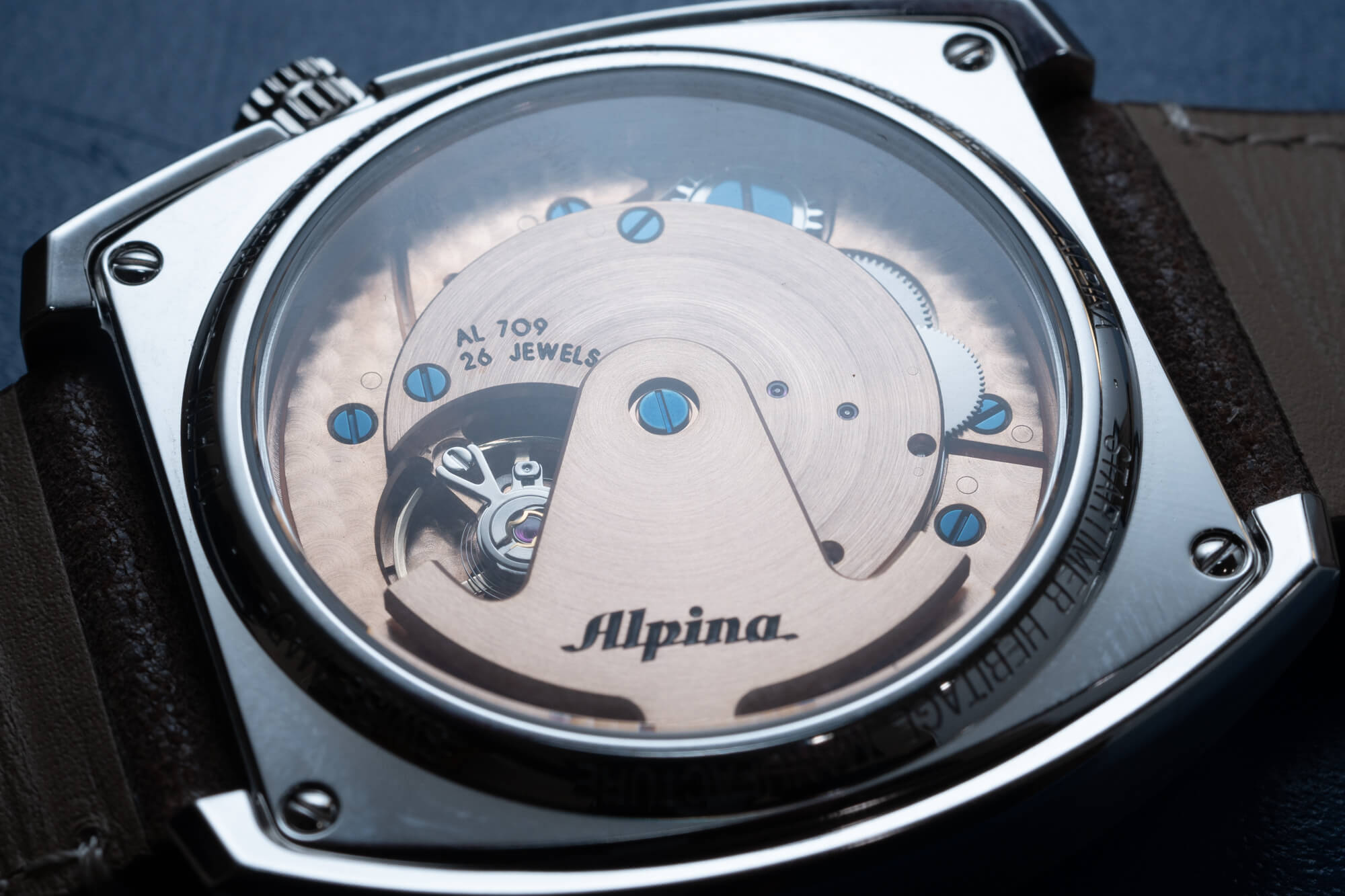 Anyone suggesting that the bumper movement is not the sole raison d’etre for this specific set of watches is either messing about or simply naive. As it was with the original candy cane dial release two years ago, this is a chance for Alpina to show off its nifty new movement. One has to question the rationale, though. Bumper movements are less efficient than modern automatic movements, and, anecdotally, they experience more wear. Alpina hasn’t just let the original tech go without an upgrade, though. While traditional bumper movements swing around 120 degrees, the Alpina AL 709—the brand’s sixth in-house caliber—swings a full 330 degrees, achieved in part by removing the springs traditionally in place to bounce the bumper back when it hits the limit of its swing. This results in greater efficiency, although still less than a modern automatic movement.
Anyone suggesting that the bumper movement is not the sole raison d’etre for this specific set of watches is either messing about or simply naive. As it was with the original candy cane dial release two years ago, this is a chance for Alpina to show off its nifty new movement. One has to question the rationale, though. Bumper movements are less efficient than modern automatic movements, and, anecdotally, they experience more wear. Alpina hasn’t just let the original tech go without an upgrade, though. While traditional bumper movements swing around 120 degrees, the Alpina AL 709—the brand’s sixth in-house caliber—swings a full 330 degrees, achieved in part by removing the springs traditionally in place to bounce the bumper back when it hits the limit of its swing. This results in greater efficiency, although still less than a modern automatic movement.
One of the charming things about bumper movements (especially when considered today, as vintage items) is the actual bumping that occurs, an incredibly satisfying sensation induced with even a slight flick of the wrist. However, by increasing the swing and removing the springs, Alpina has reduced the frequency and quality of bumping that occurs; while I had this on my wrist, it was quite the effort to get an appreciable bump out of the movement. The movement is undoubtedly attractive, though, with its rose gold finish and blued screws, as well as brushing and perlage. As far as specs, the AL 709 does appear to deliver as a more modern movement, with 26 jewels, a 28,800 vph beat rate, and an adequate 38-hour power reserve.
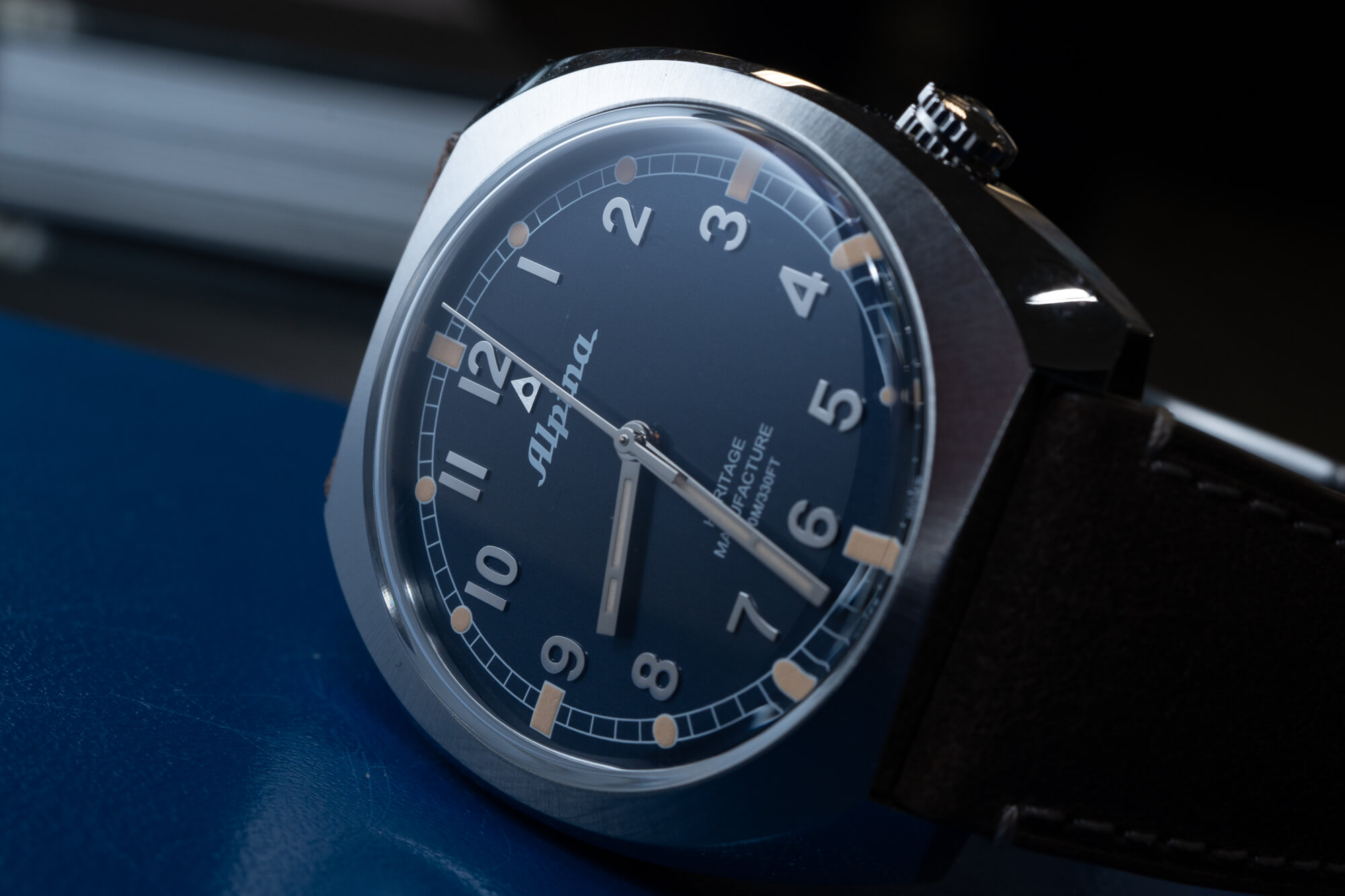 As I consider the Alpina Startimer Pilot Heritage Manufacture, I’m reminded of David Bredan’s recent Grinding Gears, wherein he talks about the current “Race to the Archives,” with brands spending more time and resources on rehashing old designs with varying degrees of success (and often at the expense of new designs). With the watch at hand, it seems that we’re dealing with historicity for its own sake, vintage because vintage (to paraphrase Spinal Tap’s Nigel Tufnel, “…these—these have bumper movements.”). Listen: This is an attractive watch that wears well and has a neat movement that is going to tickle the fancy of vintage watch enthusiasts, and the gold-plated case with its silvery dial ups the vintage ante with its colorway. But the potential quirky appeal of a vintage-style [read: obsolete] movement has been undercut by the neutering of that movement, with the bump of the bumper having been so drastically reduced as to be underwhelming and frustrating instead of charming and exciting. Limited to 188 pieces in each model, Alpina has smartly hedged its bets, and these will likely sell out because, mechanical shortcomings aside, this is a pretty watch with a pretty movement and people love vintage-y things. But I’ll also advise that you can get the same case design for a few hundred dollars less with a monopusher chronograph—or for half the price with an automatic GMT movement. The choice, as ever, is yours. The Alpina Startimer Pilot Heritage Manufacture is priced at $3,195 for the steel model and $3,395 for the gold-plated model; both models are limited to 188 pieces. For more information, please visit the brand’s website.
As I consider the Alpina Startimer Pilot Heritage Manufacture, I’m reminded of David Bredan’s recent Grinding Gears, wherein he talks about the current “Race to the Archives,” with brands spending more time and resources on rehashing old designs with varying degrees of success (and often at the expense of new designs). With the watch at hand, it seems that we’re dealing with historicity for its own sake, vintage because vintage (to paraphrase Spinal Tap’s Nigel Tufnel, “…these—these have bumper movements.”). Listen: This is an attractive watch that wears well and has a neat movement that is going to tickle the fancy of vintage watch enthusiasts, and the gold-plated case with its silvery dial ups the vintage ante with its colorway. But the potential quirky appeal of a vintage-style [read: obsolete] movement has been undercut by the neutering of that movement, with the bump of the bumper having been so drastically reduced as to be underwhelming and frustrating instead of charming and exciting. Limited to 188 pieces in each model, Alpina has smartly hedged its bets, and these will likely sell out because, mechanical shortcomings aside, this is a pretty watch with a pretty movement and people love vintage-y things. But I’ll also advise that you can get the same case design for a few hundred dollars less with a monopusher chronograph—or for half the price with an automatic GMT movement. The choice, as ever, is yours. The Alpina Startimer Pilot Heritage Manufacture is priced at $3,195 for the steel model and $3,395 for the gold-plated model; both models are limited to 188 pieces. For more information, please visit the brand’s website.

